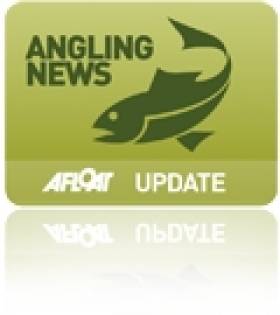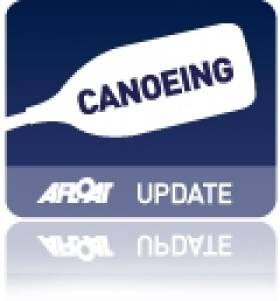Displaying items by tag: Lough Conn
Minister of State for Heritage, Malcolm Noonan has announced a partnership agreement with Enniscoe House, in Co Mayo that will see the establishment of a new nature reserve on the site.
The reserve would be jointly managed by the owners, the Kellet Family, and the National Parks and Wildlife Service (NPWS) to provide for the conservation, education and enhancement of the estate and in particular its vulnerable aquatic wildlife.
Enniscoe Estate borders Lough Conn, a Special Area of Conservation under the EU Habitats Directive, where Atlantic salmon, freshwater pearl mussels, otters and white-clawed crayfish are the qualifying interest for a potential nature reserve designation.
It’s also designated a Special Protection Area under the birds directive, where breeding common scoter, common gulls and overwintering white-fronted geese are present.
In addition, Lough Conn is a legally protected Wildfowl Sanctuary under the Wildlife Acts. The rare Irish red squirrel was recorded in the woodlands in 2019.
Minister Noonan acknowledged the commitment and dedication of the Kellet family towards managing their lands for nature, heritage and community.
 Enniscoe House in Co Mayo, the grounds of which border Lough Conn
Enniscoe House in Co Mayo, the grounds of which border Lough Conn
“I’m deeply impressed by what I’ve seen here at Enniscoe House – the Kellet family’s love and care for one of the great houses of the West over generations is inspiring.,” he said.
“The efforts they have made to protect the cultural integrity of the buildings, the work done to develop a sustainable rural enterprise, and the ongoing initiatives to protect and enhance biodiversity on the site are all to be commended.
“I thank the Kellet family for their foresight in collaborating with the National Parks and Wildlife Service at Enniscoe. These partnerships will deliver benefits to communities, nature and our built and cultural heritage.”
Susan Kellet, whose family has owned and managed Enniscoe House for 14 generations, commented: “I am delighted to have entered into this partnership with National Parks and Wildlife Service and Minister Noonan. It seems an excellent match between the work of NPWS and my own ambitions to preserve and enhance this unique corner of Mayo.
“Enniscoe House and Estate has been in the ownership of my family since the 17th century. While the estate is now only a fraction of its original size, the essential core remains. The present house dates from the 1790s, a plain exterior concealing an elegant Georgian interior.
“I have been running Enniscoe House and estate for over 30 years and my son is now taking over much of the work. He joins me in thanking the minister, and the staff of NPWS, for the opportunity to create this relationship between a private owner of an historic house and estate and the department. We look forward to many fruitful years of working together”.
Mayo Angling Ups and Downs as Season Draws to Close
#ANGLING - The going is tough in the last weeks of this year's angling season on Lough Mask, as Mayo Today reports.
Though anglers are still out in good numbers despite the shortening days and drop in temperature, catch numbers are way down on the angling bonanza that marked the beginning of a season that also produced a record-breaking monster trout on nearby Lough Corrib.
The best fishing was seen at the Vintners Federation of Ireland contest on the lough two weeks ago, where the prize-winning catch was a total of seven trout for 4.21kg.
Meanwhile, Celebrity World Cup champ Mick Dunne won the Molloy Cup catch-and-release contest with his catch of five trout measuring 157cm in total.
Elsewhere in Mayo, the River Moy has been more productive, with 199 salmon reported in the seven days preceding 19 September, and Lough Conn and Lough Beltra anglers have also reported some good fishing.
The news makes up for the "relative quiet" on the Newport Rover, and the significant decrease in catches on the Ballisodare Fishery.
UL Take Title at Irish Kayaking Intervarsities
#KAYAKING - The University of Limerick were overall winners in the 2012 Irish Kayaking Intervarsities at GMIT Castlebar last weekend.
As the Mayo Advertiser reports, some 500 students were on hand for the three days of competition, which kicked off with canoe polo on Lough Conn (won by GMIT over DCU).
Saturday's action saw the whitewater contest on the Clydagh River, with Limerick emerging on top, and the freestyle event on the River Clare at Tuam Wave.
Sunday closed with the long distance event at Lough Lannagh, which clinched the weekend for UL's kayakers.
Mayo also hosted the Irish Intervarsity Sailing Championships in Rosmoney last week, which attracting 200 students to the Westport area.






























































